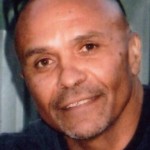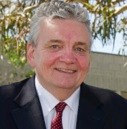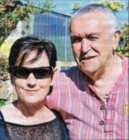
A man spends 30 years in prison, so far, when he could have been out in 24, because he claims he’s innocent. You’d have to believe him.
I didn’t do it, I wasn’t there
From Fairfax’s magazine, Good Weekend, Saturday 21 Dec 2013
In 1984, Derek Bromley was convicted of murder on the say of a schizophrenic and disputed forensic evidence. Now, his appeal may finally be heard, writes Mark Whittaker.
Robyn Milera was at a funeral in 1991 when she noticed a guy walking around with a couple of neat-casual whitefellas. A schoolteacher in her early 30s, Milera was newly married into the Aboriginal community and was already accustomed to too-frequent road trips to scattered missions for the mourning of her new in-laws. She’d been to enough to know that there was something different about the thin black man with the clean-cut entourage.
The family had stopped for a picnic at Lake Bonney, in South Australia’s east. She asked her husband, or someone – she’s not quite sure who, some 22 years later – “Who’s that guy over there?”
Instead of an answer, she was taken to him. “Robyn, meet your brother-in-law, Derek Bromley.” He was friendly, yet didn’t reach out to shake hands. His arms remained hidden under a coat. Milera was puzzled until she caught a glimpse of silver bracelets. He was handcuffed.
As she describes these events while we sit in an Adelaide Chinese restaurant, her phone rings. “And this will be Derek now,” she says.

“Hello,” she says, nodding at me to confirm that it is him. “Go away, I’m having lunch. I’m sorry I had to hang up. I was in traffic. Yep, yep, we’re just starting to have a chat now. You okay? … Because I want to know if your bald patch has gotten any bigger.” She is playful and familiar with the 57-year-old convicted murderer, who is one of Australia’s longest-serving prisoners.
Hanging up, she explains that Bromley (right) is allowed to make as many phone calls as he can pay for. “It’s his lifeline, staying in touch with everyone. Especially now, because it’s so stressful.”
The stress, after almost 30 years in prison, is that Bromley’s campaign to have his 1984 murder conviction overturned might be finally gaining some traction. And while he is six years beyond his minimum sentence, he has said previously that he doesn’t want to be released with the taint of being a convicted murderer. It’s a decision that sees him still in jail after his co-accused walked free on parole in 2004. Bromley was required to do courses addressing his criminal behaviour. At first he refused, because doing such a course would require that he admit having committed the murder. If you maintain your innocence, you cannot show remorse, so you cannot be “rehabilitated”.
About three years ago, however, he relented and did the courses. “He did them all, but it made no difference,” says Milera. “We just don’t know why he’s still in there. He’s seen lots of people come and go. People who have admitted to pretty vicious stuff. The thing about the system is that nobody has to give any reasons. A bunch of politicians make these decisions.”
As the arrival of sizzling Mongolian lamb drowns out Robyn’s words, she harks back to that funeral two decades ago. “I did have a sense that the moment was important … I do remember saying to myself, ‘Why wasn’t I told about this person? How come there isn’t a conversation and a relationship between him and the rest of his family?’ I couldn’t understand. The Aboriginal community is very close. They usually keep an eye on each other and support each other.”
During the long drive home to Adelaide from the funeral, she quizzed her husband, Russell Milera, a public servant working in Aboriginal education, about this mystery brother. He told her about how his mother, Elva Milera, died of a blood clot shortly after giving birth to Derek. His father, a shearer and itinerant worker, periodically went off chasing work and left the three children with a local woman, Mrs Bromley. In 1957, when Derek was about one, the Aborigines Protection Board arrived.
The police took the kids and that was the last their father saw of them. “Auntie Lill wanted to adopt us but ‘the welfare’ wouldn’t let her,” Russell said. Russell and his sister were fostered with a white family, while Derek was taken back to Mrs Bromley, who took good care of him. But when he was five she got sick and he passed to other members of the Bromley family with whom it didn’t go so well. He didn’t even know he had a brother and sister until he was in his late teens.
When Russell first met him, they were both running wild. “We was all pretty dysfunctional, as they call it,” Russell tells me. “Even when we got together we didn’t know how to connect.”
Russell told Robyn that Derek was in jail for murder, but he didn’t go into any detail. She wasn’t sure that Russell even knew the details. So she set herself the task of bringing the brothers together. She’d tee up a visit and it’d go well, but then there would be nothing more. She found she had to keep initiating contact to make the bond stick. Then Derek started to phone. So he’d talk to Russell, Robyn and their two daughters.
Over time, Derek Bromley started to mention his case, with a persistent theme: “I didn’t do it. I wasn’t there.” Milera was wary. She had no qualms about him personally, but how could she, an ordinary person, question the omniscience of the law?
Bromley would try to talk her through the reasons for his innocence, but she was slow to understand. She promised him, however, that she’d do everything she could to educate herself. So when she quit her job as a teacher in 2007, it opened the way for her to fulfil that promise. She started with the trial transcript. When she sat down to read it, she had to keep asking herself, “Robyn, are you biased? Is it just because you know the backstory that this sounds so absurd?”
Derek Bromley got out of jail on April 3, 1984, having served more than three years for being present when a male was sexually assaulted. On the night of his release, he went into Adelaide with a volunteer from a prisoner welfare group, Andrew Lieschke, and stayed out late. Five days later, the fully clothed body of 21-year-old Stephen Docoza was found by rowers in the River Torrens.
When Gary “Beau” Carter heard news of the death, he went to police. Known in Aboriginal drinking circles as “Reverend Beau”, he’d get about preaching with a Bible, karate-kicking branches, talking about Bruce Lee and Martians. He told police that he had gone into town in a taxi five days earlier with a man called John Karpany. About 3am, they’d pulled up at a nightspot called Jules, where they saw Derek Bromley and Stephen Docoza on the street outside.
According to Carter, Bromley and Docoza got in the taxi (Lieschke had since left) and they went to another nightspot, where Carter tried to buy a flagon of wine, unsuccessfully, before the four men paid the cabbie and walked off towards the blackness of the parklands that encircle Adelaide at night, towards the River Torrens.
Carter told the police that it was there that Bromley made sexual advances towards Docoza and became enraged when he was rejected. Bromley and Karpany attacked Docoza, punching, kicking and bashing him with a barbell that belonged to Carter. Carter said he tried to help Docoza but “freaked out” and ran off, leaving the men with the bashed and naked body (although the body was found fully clothed), and didn’t see any more.
Carter ran towards an Adelaide culinary institution, the Pie Cart, asked for a cup of water, and headed back towards the river. He says he came across Bromley and Karpany again on the Morphett Street Bridge and offered them some of his water.
Police went out and arrested the two young Aboriginal men, both with long histories of juvenile crime. Bromley denied that any of this took place, denied that he’d ever met Carter or Docoza. A police patrol had, however, stopped Bromley that night at the Morphett Street Bridge, as they were inclined to do whenever they found Aboriginal men wandering the streets at night.
The next day, Carter was admitted into Hillcrest Psychiatric Hospital, where he was diagnosed with schizophrenia and where he stayed for three months. According to Milera, a report was made on his state of mind. “We know it says he was at the time – the precise time – overtly psychotic, he was delusional, and also that he was posing as different entities.”
Milera had a schizophrenic cousin, so she found it bizarre that the police and courts could place so much importance on Carter’s evidence. And she was shocked that the taxi driver who identified Bromley as being the man he picked up that night had said that Bromley wore a white suit, white tie and white hat. Yet no evidence was produced to show that Bromley, a street tough Aborigine who’d been out of jail for just a few hours, owned such a dandified outfit.
Nor was Andrew Lieschke, who had accompanied him into town, called by either the defence or prosecution to say what Bromley had been wearing. The flaws in the evidence of the mentally ill Carter and of the taxi driver’s identification were thrashed out at trial and again at appeal, where the High Court found that appropriate warnings had been given to the jury by the trial judge.
The jury perhaps chose to overlook those flaws because there was also a third plank to the prosecution case, the forensic evidence. So long as the forensics supported the other two planks, the case held together. And it was while looking into this, that Milera found Dr Bob Moles.
Bob Moles, tall, grey and just a little dishevelled in the way of a pin-striped law boffin, is a one-man innocence project. He has quit his job as an associate professor of law at the University of Adelaide to pursue his crusade to free the innocent, particularly those who’d been put away by the evidence of South Australia’s former chief forensic pathologist, Dr Colin Manock.

It had started when a student came to Moles (left) with a project that examined Manock’s evidence in a murder trial. “I wasn’t particularly interested in miscarriages of justice,” says Moles. “I said, ‘Can you bring me any evidence?’ The student brought me a barrow load. I read it and thought, ‘This is crazy. It can’t be right.’ But it was, and because Manock was the chief forensic pathologist, we thought there must be more cases like this. So we had a look and quickly came up with a dozen more.” One of those cases was Derek Bromley’s.
When Moles met Bromley in prison, he knew he was someone he could work with. “Derek’s very much on the front foot. He’s intelligent, articulate … Sometimes he’ll ring me up and say, ‘You have to talk to this fellow and that fellow.’ Half an hour later he’ll ring me back and say, ‘I’ve talked to the other fellow and he’s agreed to meet you.’ Then, half an hour later, he’ll ring back and say, ‘I’ve arranged the meeting for Friday at 10.’ ”
The thrust of Moles’s argument – tabled by the South Australian Parliament’s legislative review committee – is that Manock, as the chief forensic pathologist for the state, performed 10,000 autopsies and yet was not properly qualified as a forensic pathologist. “It’s important to appreciate that the so-called scientific evidence he gave at the Bromley trial was utter nonsense,” says Moles.
In that evidence, Manock had asserted the various cuts and bruises on Docoza’s body had occurred in the hour before death and that Docoza had drowned. Adds Moles, “Manock gave a number of descriptions of injuries: this one would have been caused by a kick; this one could have been caused by a barbell; this one could have been caused by scraping on the ground. All those descriptions exactly correlated with [Carter’s] description of the fight. So you have a good match between the scientific evidence and the eyewitness evidence. You put them together and you come up with a conviction.”
Manock’s opinions went through the trial and the appeal uncontested. But one of Australia’s foremost forensic experts on drowning, Professor Vernon Plueckhahn, as quoted in the tabled document, said it was his “firm opinion that there is no scientific basis in the post-mortem findings for an unequivocal diagnosis of death from drowning”.
In fact, Moles says, there wasn’t enough evidence to say that Docoza was even murdered. “Once a body’s been immersed in water for about two days,” he says, “the tissues become putrefied and they become a bit like jelly, so if you could identify injury to the body you couldn’t possibly determine if it’s happened before or after death.
“A body initially sinks to the bottom, rolls around for a couple of days, coming into contact with debris on the bottom. After that, because of the gases building up in the body, it begins to rise. If it’s busy, like the Torrens, boats can knock it around. The body is face down with the arms hanging down. The head gets bumped around.
“Dr Manock said at trial that none of the damage to the body was done post-mortem. He didn’t have any rational basis for saying that, because you can’t distinguish post-mortem from ante-mortem injuries when they’ve been in the water that long.”

David Szach was in prison when Bromley and Karpany were arrested for murder. It surprised him. He’d known them both and he didn’t believe it. Bromley was a “stand-up guy”. “I found the whole scenario bizarre. He allegedly killed this guy with a dumbbell in an attempted rape. It didn’t make sense to me.”
But Szach (right) knew more about the system than most. In 1979, he had been convicted of murdering his 44-year-old lover, prominent Adelaide lawyer Derrance Stevenson. Stevenson’s body was found in a foetal position in his freezer with a single bullet through the back of his head.
It was made all the more notorious by the fact that Szach, then 19, had been in a relationship with Stevenson since he was in year 9, having been recruited in Adelaide’s Rundle Mall by Gino Gambardella, a chiropractor who was active in the city’s gay scene in the 1970s and who fled Australia for Italy in 1980. “Gambardella was procuring people such as myself for prominent people around Adelaide,” says Szach. “That’s what his primary activity was.”
Colin Manock had testified that the time of Stevenson’s death was between 5.45pm and 6.40pm, which just happened to coincide with the time that Szach was at the house. Gambardella had also been at the house later that night, and there was no other hard evidence against Szach.
Thirteen days after Stevenson’s murder, Alan Barnes, 17, disappeared. Barnes had also been introduced to Stevenson by Gambardella. But any murky connections that might have existed between the murders weren’t pursued by police because they already had Szach in the frame.
Szach became a busy campaigner from jail. He got some of the most prominent forensic pathologists in the world to say that it was impossible to pinpoint the exact time of death for a body in a foetal position in a freezer. Szach became an embarrassment to the authorities. He was encouraged to apply for a parole date under new sentencing laws, but refused, saying that such a move would recognise his own guilt.
“I think the government got to a point where it was either going to hold an inquiry into the circumstance of my arrest and conviction or release me,” says Szach, now middle-aged and suffering from motor neurone disease.
Szach was released in 1993 and says the South Australian government had to amend legislation so that it could give him a parole date without him applying. “It didn’t matter what I did, they just wanted me out of jail,” Szach says. “That’s why I find it so difficult to understand why my situation is so far removed from Derek’s situation and why he’s had to spend these additional six years in jail for a stance which has been no different from my own, other than he’s black. The government bent over backwards to give me a get-out-of-jail free card and yet they are re-sentencing him year after year.”
Colin Manock comes to the front door of his sandy brick house in a cute Adelaide street. He is affable, with short silver hair and a grey beard, but not interested in talking about Bromley or any other case. He fought a defamation action against Channel Seven for seven years, he says. “The court case almost cost me my marriage. But my wife eventually saw the sense of going through with it.”
“Do you have anything to say about Bob Moles?”
“Yes, he’s a c….”
When I tell Moles of the exchange, he lights up. “He’s often said, ‘If you see Bob Moles crossing the road, put your foot on the accelerator, not the brake.’ ”
Bill Rowlings, CEO of Civil Liberties Australia, credits Moles’s campaign against Manock with having created a huge breakthrough for the wrongfully convicted. Once a person has been convicted in Australia, they have one right of appeal within 30 days. If new evidence subsequently emerges, their only means of getting back before the courts is by a pardon petition to the state governor. As the Queen’s representative, the governor hands the petition to the state’s attorney-general, who effectively decides whether the case has merit. Leaving such a potentially unpopular decision in the hands of a politician explains why few people are ever freed this way unless they have a strong media advocate.
But earlier this year, South Australia became the first state to take that decision away from the attorney-general and give it to the courts, a direction which Civil Liberties Australia wants other states to follow. “South Australia has done a terrific service to the nation,” Rowlings says.
One of the first people to appeal on the day the new system came into effect in June was Robyn Milera, who, at 53, is halfway through a law degree – she may well be qualified by the time the matter has ground its way through the legal mill. (David Szach also wants to appeal his conviction under the new system but has been unable to get legal aid because, it was decided, it is not in the public interest to pursue the innocence of a freed man.)
Bromley has long been a pain for the authorities. In 1983, he was said to be a ringleader of Adelaide’s Yatala prison riots, which saw 50 inmates hold three guards hostage and set fire to a building. In 1987, outraged by intrusive body searches at Yatala, he led a passive protest that was broken up by the Tactical Response Group. He reportedly beat charges of assaulting the TRG and went on to successfully sue them for his injuries. And he remains proud of his evidence to the royal commission into black deaths in custody. But not everyone has been impressed. “Until recently, his behaviour in prison has not been good,” says Frances Nelson, chair of the South Australian Parole Board. “There’s work to be done before he’s ready for release.” She declines to specify what he’s done, or when.

Milera (pictured with Russell Milera, Koori Mail/Liz Murray) blames any record of poor behaviour on prison authorities not allowing Bromley to do work release. And his not-guilty stance. “Potentially, he could have been released years ago if he’d been content to wear a guilty verdict,” she says. “He’s never been prepared to compromise his innocence. His co-accused was released a number of years ago. Even now, he would not compromise that. If he were to be told, ‘You must face up to your evil deeds, otherwise you’ll never be released’, I know him well enough to know what his answer would be: ‘I’d rather die in jail.’ ” Having been inside for more than 30 years, with just a week of freedom in 1984, Bromley has not stood on a street nor gone to a job. In September, he was driven to a parole interview in a car. Normally he’d be in a dog box. So for the first time in all those years he got to look at the world.
Bromley rang Milera that night and told her, “It was really weird today. I was looking at all these people. There’s people from all over the world in Adelaide, isn’t there?” He said it was like he was observing the city, but he couldn’t touch it or taste it. He’s acutely aware that he has lost touch with how to live an ordinary life. Not that he ever lived one. “I can’t say that it frightens him,” says Milera, “but I think he’s instinctively aware it’s going to be a weird experience, surreal.”
Robyn and Russell Milera, despite being separated maritally, continue to live in the same house and have put that home forward as somewhere Bromley can live when he gets out. For now though, he’s at Cadell prison farm, where he fixes machinery in the workshop. “He’s taken continual kicks in the guts over the years,” says Robyn Milera. “But I would say his most striking trait, and I’ve heard other people comment on it, is that he’s extraordinarily positive. It’s a choice. Like he said to me, ‘Crying isn’t an option. Begging isn’t an option.’ He learnt quite a number of years ago that violence wasn’t an option.”
And no matter what happens, he rolls with it. He told Robyn once, “I’m entirely institutionalised. You can’t do any more to me.”
This article appeared first in the Good Weekend, the Fairfax national, weekly news magazine.
http://www.smh.com.au/national/i-didnt-do-it-i-wasnt-there-20131216-2zfwf.html

